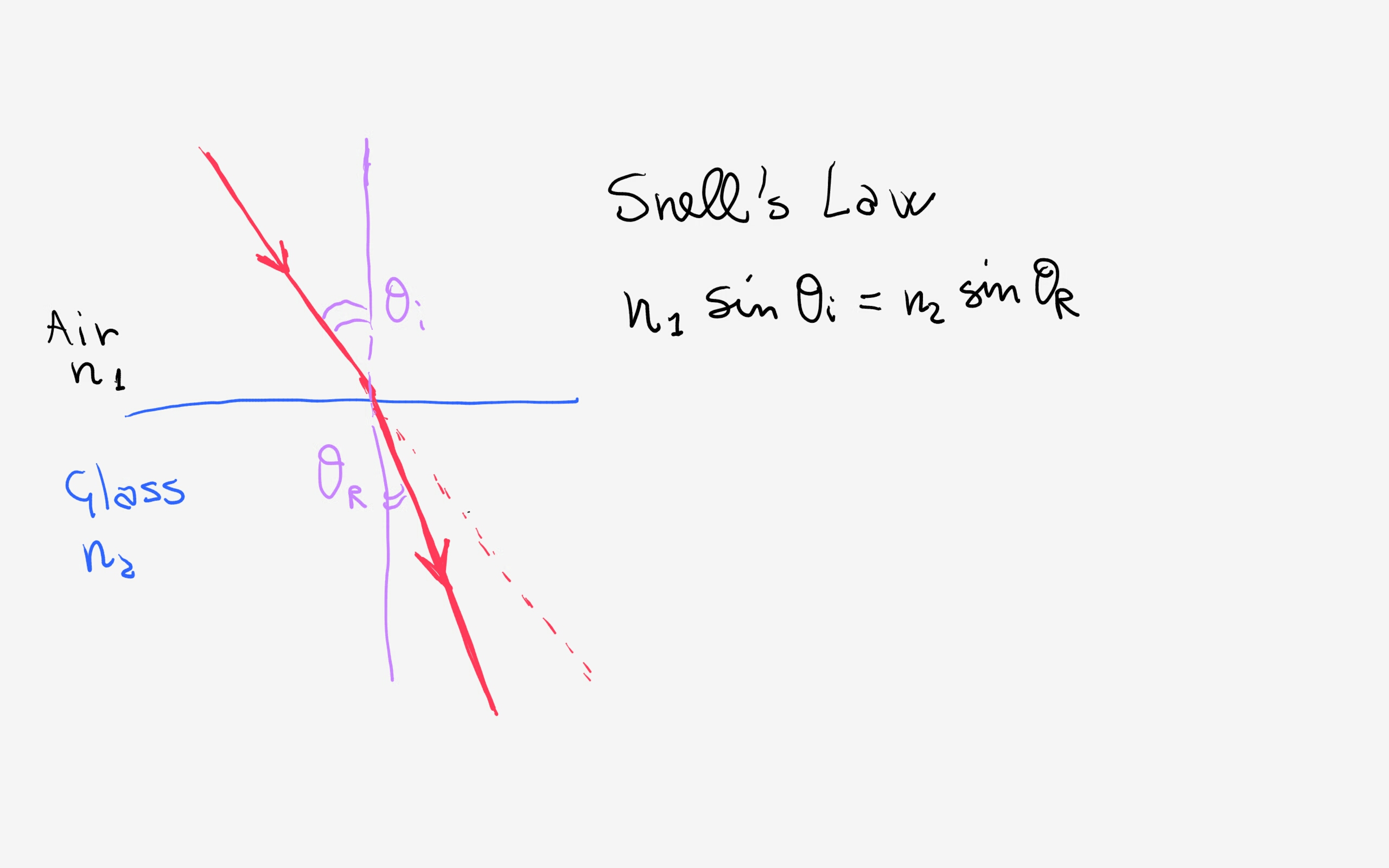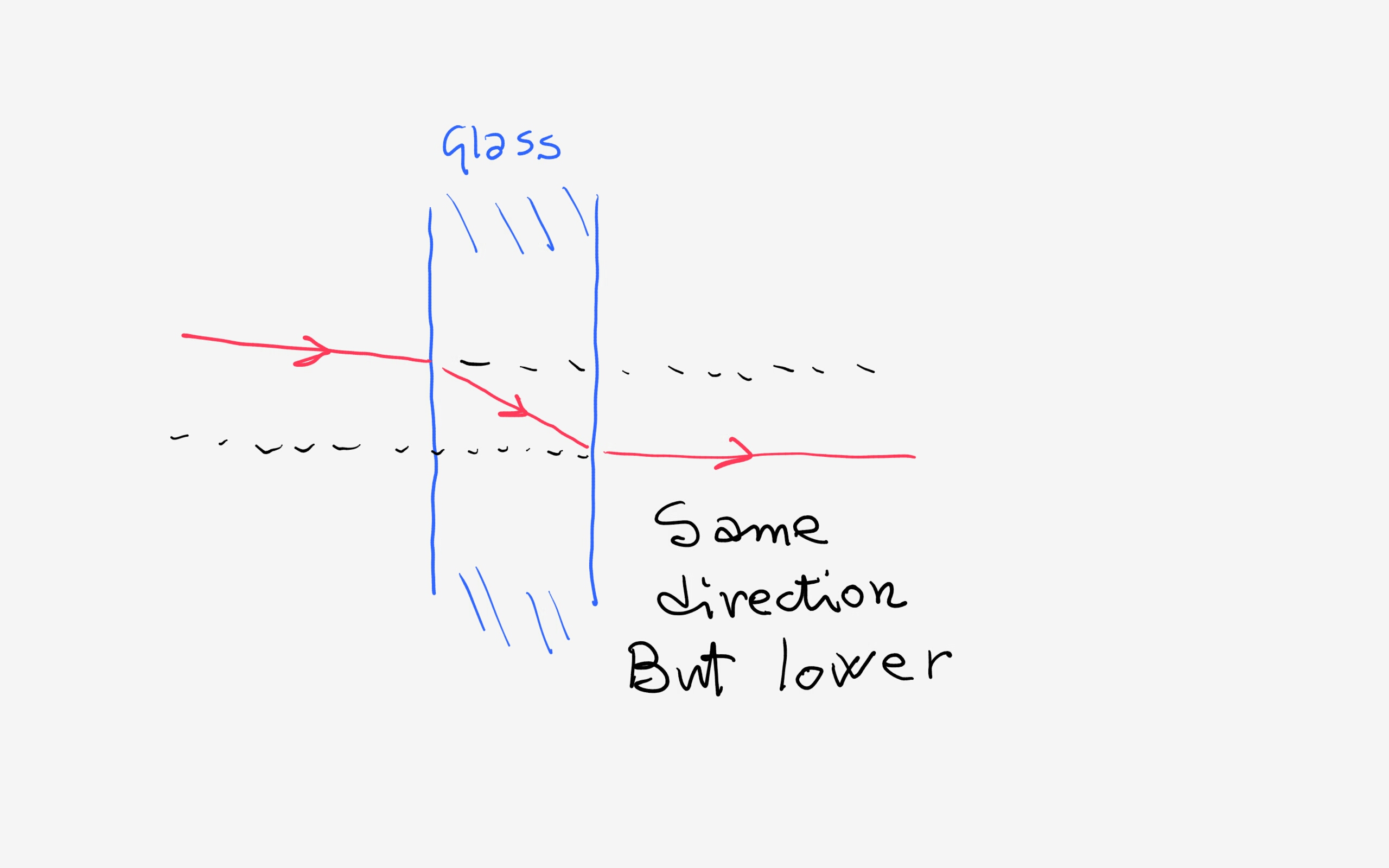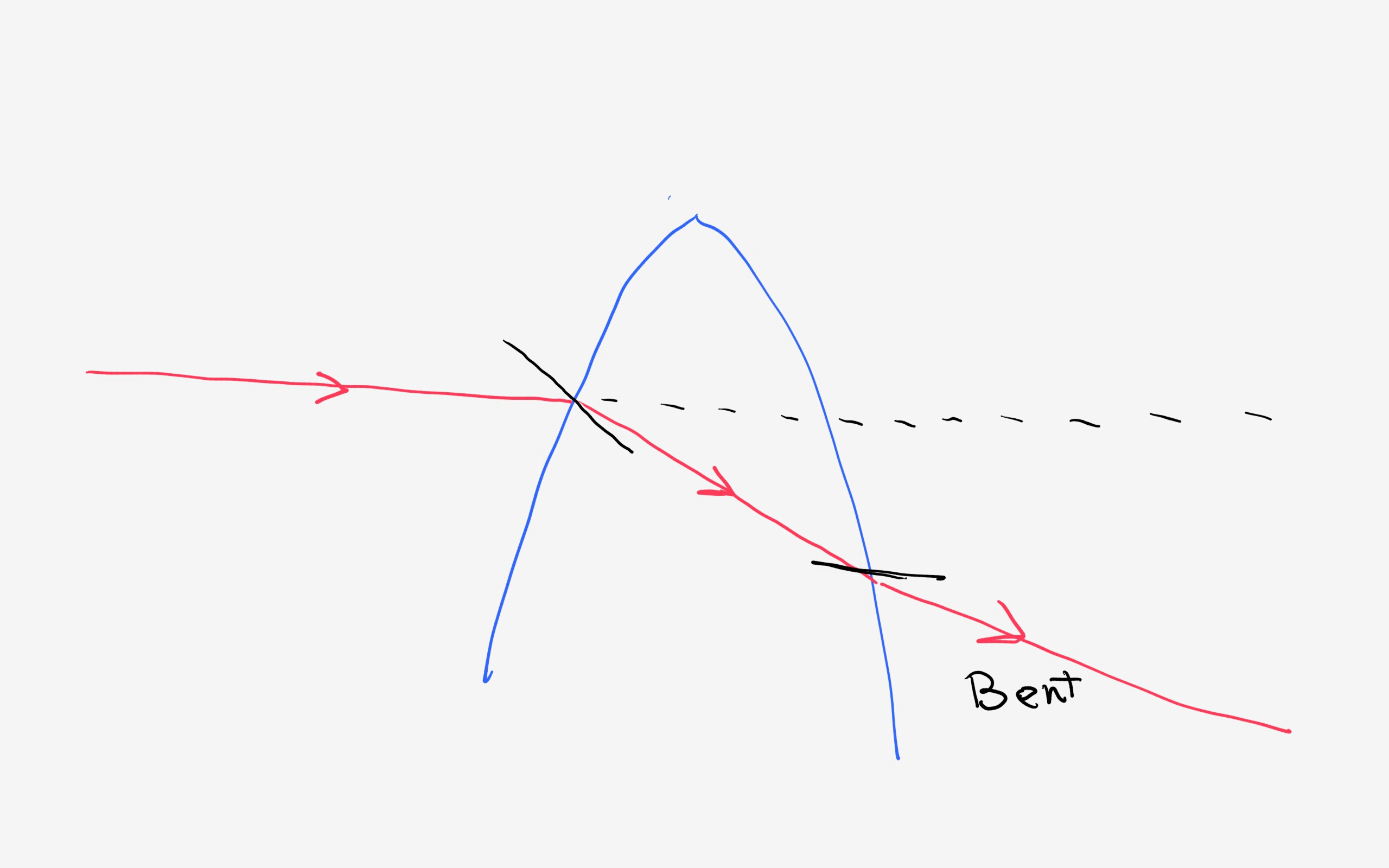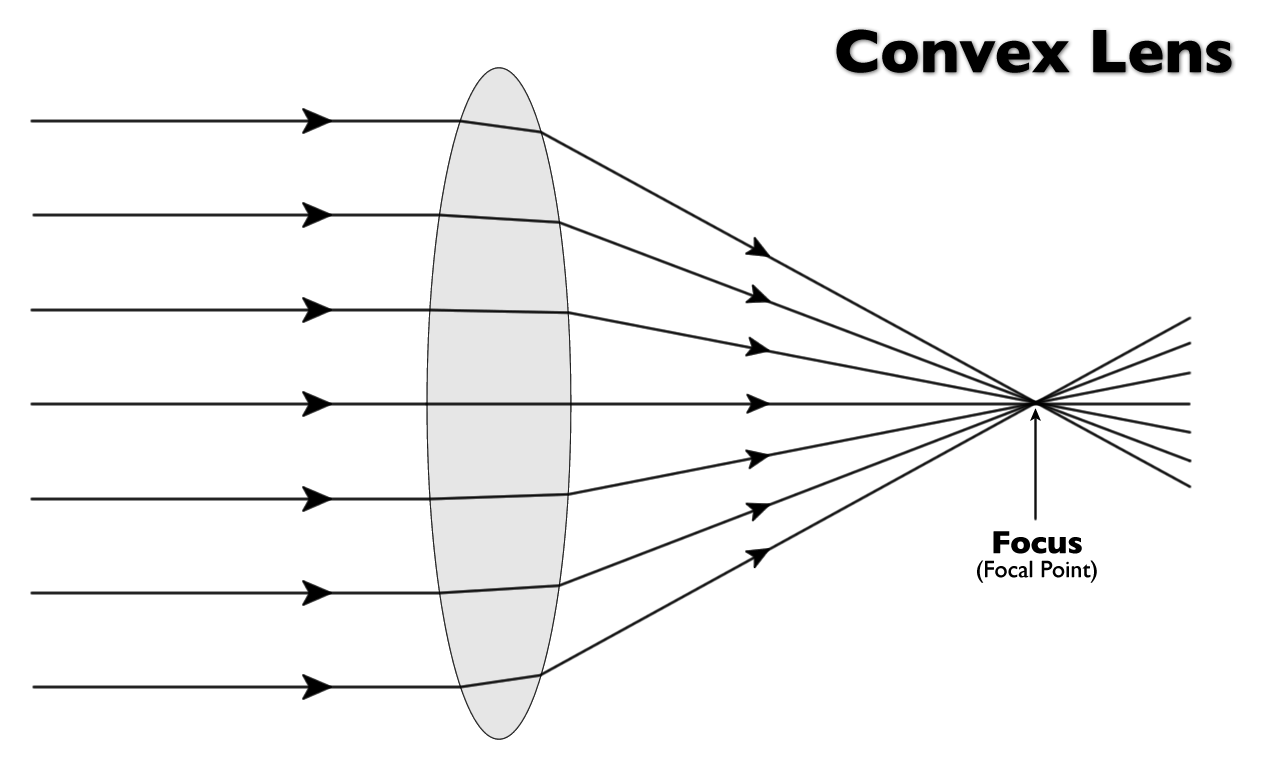Question #99aab
2 Answers
I tried this:
Explanation:
Here we can use Snell's Law to try "seeing" the effect of a change of medium on the path of a light ray.
When light passes from air to glass the ray is bent (Refraction); again in passing from glass to air it is bent again.

We can use this idea with glass:
1) parallel faces:

2) curved faces: Lens:

I exaggerated a bit but you can see that the final result will be ray bent (according to Snell's Law) from the original direction. This allows you to bend and eventually focus different parallel rays.
The ability of this lens to cause parallel rays of light to converge to a focus is entirely ruled by the law of refraction applied both as the ray enters the lens, and again as it leaves.
Explanation:
As is generally true, light entering glass from the air will be refracted toward a line drawn normal to the surface of the glass.
What confuses students is when a diagram is drawn showing the path of the ray mysteriously changing at the centre axis of the lens, as is commonly done in ray tracing diagrams.
Consider the image below:

Careful inspection shows you that as the top-most horizontal ray enters the glass, its path is bend downward slightly. This is toward the normal line (not shown). Then, the ray travels in a straight line through the glass, but as it emerges from the glass, its path is bent away from the normal, and again downward. So,both these refractions cause the ray's path to bend downward.
For a ray incident in the lower half of the lens, the same rules of refraction are followed, but each time the ray refracts, its path is bent upward.
Thus, all rays incident on the upper half of the lens are refracted down, and all rays incident on the lower half are refracted upward. Thus, the paths of the rays are made to converge, and this is called a converging lens (as well as a convex lens).


